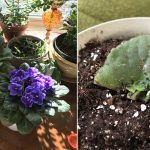If you have been struggling trying to grow African violets, here are the top African violet care tips you must know!
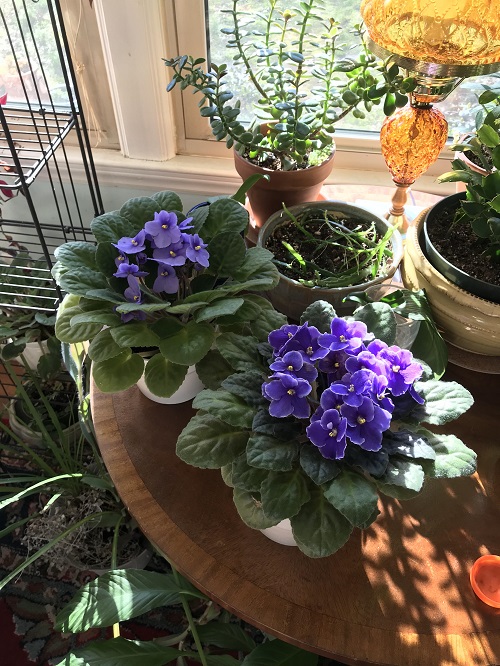
While growing African violets is not easy, as they are pretty picky plants regarding their growing conditions, the only chance of success you will have is when you play by their rules. Native to the tropical forests of East Africa, these plants will only grow well indoors if you can mimic the the right conditions following these care tips!
Top African Violet Care Tips You Must Know
1. Use Epsom Salt for Better Flowers
You can boost beautiful blooms in African violets with a simple Epsom salt solution. Mix one teaspoon of Epsom salt into a gallon of water and shower your plants with this mixture once a month. Epsom salt provides magnesium that helps with photosynthesis. This will help the plant produce more chlorophyll, leading to lush leaves and pretty flowers..
2. Rotate the Pot Regularly
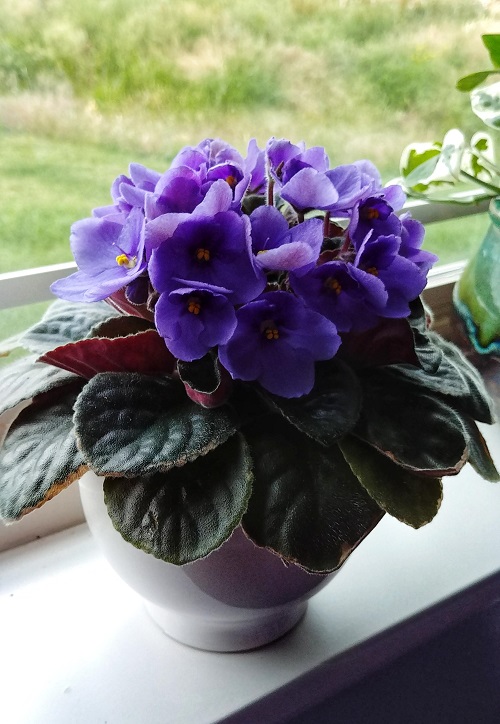
To ensure even growth and flowering, rotate the pot a quarter turn every week. This allows all sides of the plant to receive equal light, preventing partial growth and a lopsided appearance.
3. Violets love High Humidity!
African Violets have a deep thirst for humidity and require a high humidity of 50-60%. You can achieve this by using a humidifier near the plant or placing it on a pebble tray to boost moisture in the air. You can also try misting the plant, but that must be done with caution as wet foliage promotes a chance of rot.
4. Use a Wick Watering System
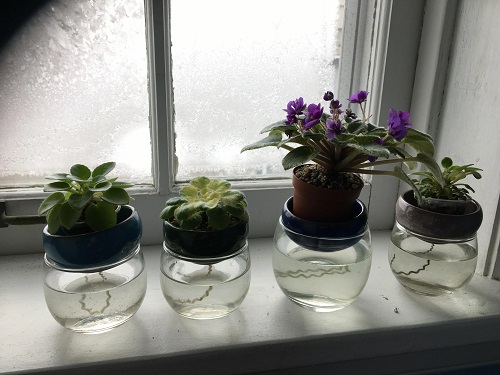
Set up a wick watering system for your African violets. This method ensures a consistent supply of moisture and helps prevent overwatering, exactly what you need. To set it up, place a wick (like a piece of cotton string) in the soil with the other end in a water jar. The wick will draw water into the soil, keeping the moisture levels just right for your plant.
Or you can water it from the bottom rather than the top to avoid leaf spots. Simply place the potted plant in a dish filled with water and let it sit until the soil is fully moist. This helps maintain the ideal soil moisture without the risk of damaging the leaves with water that’s too hot or cold.
PRO TIP: Let tap water sit for two days so chlorine evaporates from it before watering violets with it. They’re sensitive to chemicals in tap water and prefer water at room temperature, not chilled. You can also catch rainwater and use that to give your violets a drink.
5. Fertilize with African Violet-Specific Feed
While many houseplants thrive on general-purpose fertilizers, African violets benefit from fertilizers specifically formulated for them. These fertilizers should have the right balance of nutrients to support flowering and foliage health. Go with a balanced NPK ratio (such as 14-12-14) diluted to its quarter strength that will provide the necessary nutrients for robust growth and prolific blooming. Use it every 4-6 weeks during the warmer months.
6. Clean and Prune Your Plant
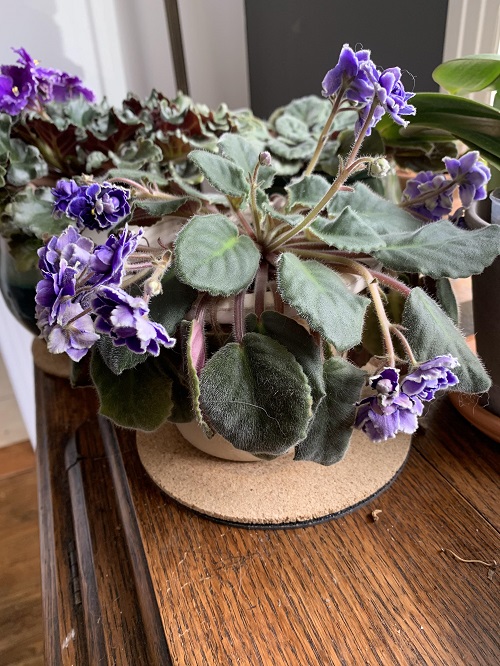
To keep your plant healthy and looking its best, regularly remove spent blooms and yellowing leaves. This will tidy up your plant and prevent disease and encourage new growth. By deadheading or removing spent flowers, you redirect the plant’s energy from seed production to creating more blooms. Additionally, getting rid of yellow or damaged leaves helps stop the spread of diseases and keeps pests at bay.
7. Artificial Lighting Adjustments
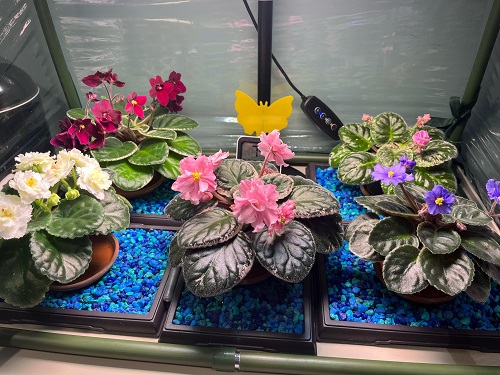
If natural light is insufficient, use fluorescent or LED grow lights set on a timer for 12-14 hours daily. Position the lights about 12 inches above the plants to mimic their natural environment.
8. Strategically Propagate the Leaves
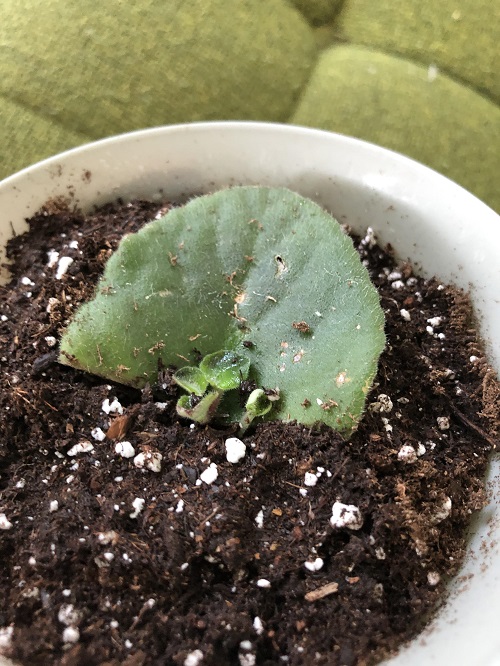
While propagating an African Violet via leaves is super easy. So when you do it, select healthy, mature leaves. When you cut a leaf for propagating African Violets, make sure to leave about 1-1.5 inches of the stem.
To boost your success rate, dip the cut end in rooting hormone, which encourages faster root growth and healthier plants. Place the stem into a well-draining, moist soil mix suitable for African Violets, making sure the leaf stays upright and receives indirect light.
Keep the soil consistently moist. In a few weeks, you’ll see new plantlets sprouting, giving you a thriving, new African Violet plant.
9. Keep a Lookout for Pests

Keep an eye out for pests like thrips and cyclamen mites. You can also use a magnifying glass to inspect the undersides of leaves regularly. If you find the pests, isolate the affected plant initially and treat it with a blend of neem oil and dishwashing liquid spray.
10. Maintain Optimal Temperature and Keep Away From Drafts
These plants are super sensitive to temperature fluctuations. To keep it healthy maintain a stable temperature between 65-75°F (18-24°C) and avoid placing your African violets near drafty windows or heating vents. Sudden temperature changes can stress the plants and inhibit growth. African violets are sensitive to temperature fluctuations. Keeping them in a stable environment helps prevent stress, which can lead to poor growth and reduced flowering.




